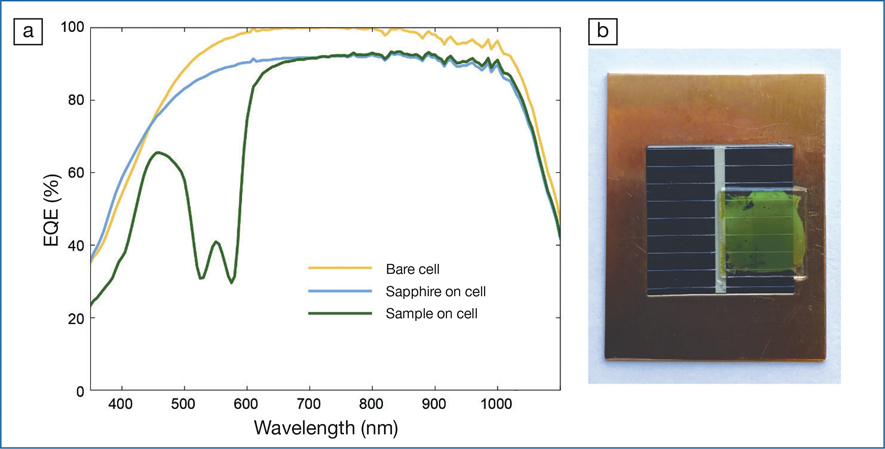The costs of producing and installing solar cells have been steadily decreasing, propelling global installations to 375 GW, which is equivalent to 1.8% of total worldwide electricity generation. An important aspect of this technology that has largely been ignored is the physical appearance and color of the photovoltaic (PV) modules. This is particularly important for applications where solar cells are integrated into buildings.
Although colored PV modules are expected to be widely used, their lower power-conversion efficiency (PCE) threatens to increase the production costs. Imparting color to the modules causes a certain portion of the visible solar spectrum to be reflected, thereby reducing the photon flux available for producing electricity. This intrinsic tradeoff has very recently been challenged by Albert Polman and co-workers at FOM Institute, AMOLF, The Netherlands. In an article published in Applied Physics Letters (doi:10.1063/1.4986796), Polman, Verena Neder, and Stefan L. Luxembourg report highly efficient silicon solar modules that are green in color. The color arises from nanocylinders of crystalline silicon, 100–120 nm in width and 240-nm tall, that are integrated into the top cover layer of the panels using a technique called substrate conformal imprint lithography. The dimensions of the nanoscatterers are so chosen as to have Mie resonance in the green portion of the visible spectrum. The underlying phenomenon, Mie scattering of light, occurs when photons bump into particles having dimensions of their wavelength—the same effect that gives clouds their white-gray appearance in the sky.

(a) Measured external quantum efficiency (EQE) of a silicon heterojunction solar cell (orange), unpatterned module (light blue), and nanopatterned module (green). (b) Photograph of nanopatterned module shows bright green reflectance. Credit: Applied Physics Letters.
Prior strategies for generating colored PV modules focused on employing dyes and multi-interference layers. However, these approaches have significantly compromised PCEs, where dyes exhibit significant absorption losses, and the fabrication of multi-interference layers is associated with high production costs. “In our design, the use of resonant dielectric particles results in significantly reduced absorbance losses and we can control the color of reflection. Also, we are demonstrating a one-layer design that has the potential to be scalable and cost efficient, by a printing step on the module glass,” Neder says. Importantly, changing the size and distribution of the nanocylinders allows the color of the modules to be tuned, as expected on the basis of Mie scattering. The green modules reported by the group yield an impressive 18% PCE. The researchers say that their nanopatterning approach would be scalable and compatible with roll-to-roll fabrication in the near future.
The research group is interested in taking this development to the next level by realizing an advanced design that can scatter the light from a single incident angle to a range of outgoing angles. “We have already developed a white-gray mini-module, a concept that allows multiple colors and color combinations. We show that random arrays of silicon nanoarrays can be combined with pixels to create the desired color. We presented these results in the European PV conference and are going to publish them shortly,” Neder says when asked about the future of her colored PV.

